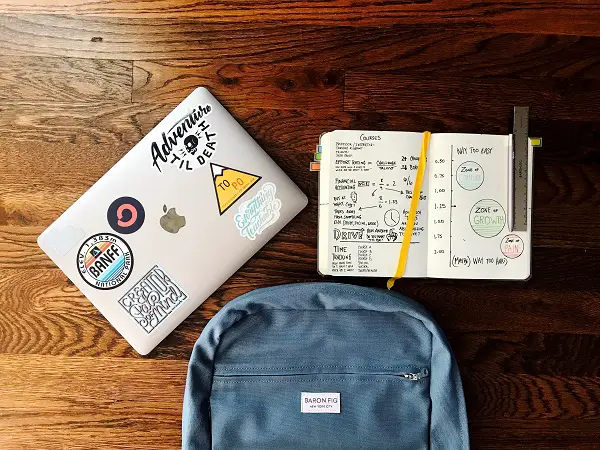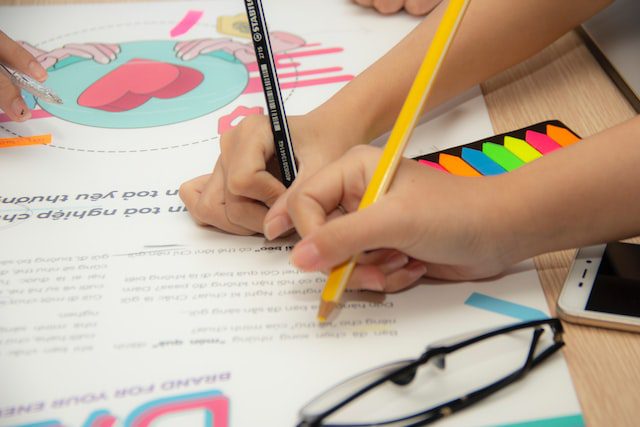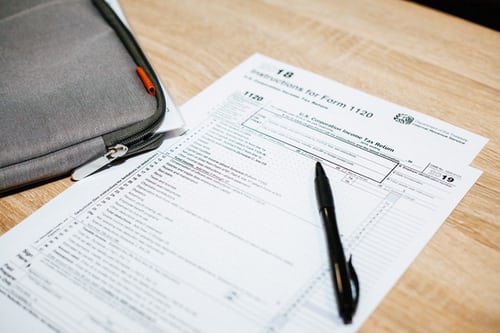
The many steps it takes to fill out Financial Aid correctly and efficiently revolves around following the strict rules to receive a decent amount to aid in tuition. Students who are filing out a Financial Aid packet for the first time should follow a step-by-step guide to ensure correct results.
First off, what exactly is Financial Aid? Well, the U.S. alone for each university year has $150 Billion to loan to students who are in need to pay for a higher education. And the least known fact about applying for financial aid is to understand that this is a first-come, first-serve process of elimination. If a student waits to fill out their financial aid packet, then well they have a lesser chance of being rewarded with either a great amount of funds or none at all.
Before Filling Out the Packet, Pick Which School(s) You Want to Attend
A huge misconception is that students will fill out a financial aid packet and find that either the school they intend to attend has not sent an acceptance letter or they have skipped a number of columns that should have been filled out based on the chosen school.
Yes! A student must have been accepted to a college or university before filling out the packet to receive financial funds. This is because each university has different rules about what is required and how much financial aid is required for each individual student who applies.
By all means making a list of schools that would be backup plans and ideal to attend is the best way to start with this journey. List out schools that you have applied to or have been already accepted and receive a letter of acceptance.
Before Filling Out Anything, Gather All Official Government Documents
Instead of scrambling about with a messy desk, have all official documents stacked and ready to go through. Even if it’s a document that is not used, either way having all official transcripts, ACT scores, SAT scores, and more.
However, we will show below what a student needs to fill out a financial aid packet for the first time:
- Bank statements and records of investments
- Federal income tax returns
- W-2 forms
- Any official identification that shows how money is being earned
- Records of untaxed income
- Social Security Number
- Resignation of citizenship if not a U.S. Citizen
- An FSA ID to sign electronically
For the CSS Profile:
- Mortgage information – from parents
- Information regarding ownership of small businesses and other assets – from parents
- College Board account
- Understand that as a student, you will need your parents’ income information
A big mistake that most don’t recognize is that, the earlier their parents fill out their tax information the better. This allows for a quicker run through and more accurately time portrayal of income information.
What Mistakes to Avoid
There are multiple mistakes that happen on each financial aid fill out packet. Ideally, the one huge mistake is when filling out numerical information. Don’t use decimals or commas for the number amount, always round to the nearest dollar.
More than anything having a license driver I.D. is essentially because that I.D. number is used to verify more accurate information. If listed incorrectly, and written in even if a student does not have a license, requiring a driver’s license is the only way out of this predicament.
Students will be asked about marital status. Don’t fill out the marriage status as married if the student is not. The student will also need to fill out the relationship status of their parents as well, if the student has step-parents list this information correctly.
Do not leave the drug offenses section blank, either be honest or write “none” or “have no offenses” in the box.
Under any circumstance do not forget to write down the college you’ve been accepted to. This is crucial so that financial aid goes to your new college bank account and partial goes to tuition.
Oddly, enough many students write the wrong address down, write your current address correctly.
Remember that a student will be contacted if their parent’s information needs verification; they don’t need to send a copy of their tax returns in with the student’s application. If selected for verification the financial aid office would need verification documents along with tax return transcripts, however, copies of tax returns are not sufficient.
If a student is filling out an application electronically, they will need to create an FSA I.D. at https://fsaid.ed.gov/npas/index.htm. This I.D. is used to confirm the individual identity when accessing their financial aid information and electronically signing their federal student aid documents. Only create this account using personal information and for their own use.
Send in accurate tax income information, otherwise wrong information about taxes will lead the application to be thrown out or returned and ignored.
How to Fill Out the Packet Correctly
The United States has a Pre-Application Worksheet to go through the steps to accurately filling out the papers or electronic online packet. The biggest point to remember is to fill out the packet according to the year you intend to attend college/university.
Example:Students attending college from July 1, 2019 to June 30, 2020 can file the 2019 – 2020 FAFSA between October 1st, 2018 and June 30th, 2020 using their 2017 tax information.
Student identification is essential and needed. Mostly, each section just needs accurate information like birth date, full name, full address, phone number, education, and work-study, if the student has any. When it comes to income and tax information if the student applying is married and has children (marked as dependents on tax forms) this has to be filled out.
After filling out the financial aid packet each individual who completes and submits an application online will receive a confirmation number to refer too.
How Long Does Processing Take
Processing actually happens to be quicker than most think. Financial aid packets applications are processed within 3 to 5 days. However, paper applications are typically processed within seven to 10 days because post mail is slower.
Expect an application aid report to arrive either through the post or as a PDF file via email after submitting. Students will receive this report after their application has been processed and received by the government.
After receiving the financial aid report, students can expect to receive their Expected Family Contribution and determines their eligibility for Pell Grants. With this new information students will be able to access the college board where students will be given a college bank account allowing access to the shared $9 Billion that is handed out by the financial aid government.
Receiving Financial Aid Award Letter
What are the differences to expect while receiving an award letter, and how to interpret these award letters. A few things may not be mentioned in detail such as some schools don’t include the cost of attendance. This will need to be discussed with the institution admissions office.
Some award letters may mention how much room and board cost while offers opt it out. Depending on the university attended… these extra fees will need to be discussed with the admissions office or a representative of the university. This would be determined to be hidden fees or costs that are not openly written out. These costs change each year and are steadily having higher rates.
Award letters will not depict which part of the financial money is need-based loans, work-study, or grants. The only way for these to be identified is to talk with a representative of the university school board or research them independently.
Be sure to research the university you’re attending, look if they have a student aid budget, whether it be limiting or expansive. If the school report has a limiting student aid budget this means gaps will be left open for the student to pay themselves, rather than the financial aid award.
When it comes to lenders, students can find an independent lender that they find themselves. If the award letter recommends lenders and gives a list, a student does not need to pick from the list provided.
Family contribution payment: This means certain loans, such as the unsubsidized Stafford loan, the PLUS loan and private student loans, are intended to help families pay for the family contribution.
Receiving Financial Aid and Accessing Payment
For example, in Canada, a certain amount can be loans to a student and they do not need to start paying back interest until 6 months is up. This extra amount that can be accessed by Canadian student who needs to pay extra cost of living fees. Typically, in Canada is a family makes below the income annual level will receive $3,000 per grant or loan accessed.
Traditionally each country and providence are different when it comes to student loans and grants, some depict and marginalize specific attributions, talents, gender, or minority. However, if a family’s income far exceeds the standard level line, they will not receive grants or funding. This is normal for wealthy families that are well off, and in return these families donate money to universities where most of their ancestors or descendants are alumni.
Accessing payment for a student will be about being able to access the college account given to the student.
What Happens If All the Financial Aid Money Is Not Used?
If a student happens to have remaining award money left over, other fees will pop up such as:
- Textbooks
- Equipment for lab
- Notebooks
- Laptops/Computer
- Or uniforms required
The school will disburse the financial amount in a balanced way, if there is remaining money, a student is required to a refund check. The refund will arrive as a check in the mail or a direct deposit to the students personal banking account within a few days of the new semester.
Students have a few options to leave the extra money in their school bank account. Other ways to utilize the excess amount is to put forward that amount to extra tuition costs or living expenses that may come up. This money can also be put away as a saving for an emergency or just for the future. When an individual receives a refund check they must show this to their taxes. The institution will send the individual a tax receipt to show how much was refunded.
Interest is Interest
It must be understood that once money is borrowed this also means the individual acquires interest. No matter how much or little that is borrowed, interest comes with it. This can mean a student having acquired a numerous amount of student debt just because of the interest, or being able to pay off the remaining as quickly as possible.
Interest tends to be forgotten until an individual receives a notification that the loan must be paid back from a year from then. Loans have payment plans but these payment plans can accredit more interest than intended to pay back. The best route when it comes to taking out a student loan is to take a small loan that is within the student’s limit to pay back. However, some students don’t have a choice when applying for a large loan. In this case, being able to find a grant (which pays like a reward amount that does not need to be paid back) or a scholarship that is a reward amount that goes directly to paying off tuition. Scholarships and grant money will go towards the college account to the student, yet, grant money can be disbursed into different sections of that student’s life. Such as travel, groceries, or necessary everyday items. No matter the outcome, financial aid packets just need to be filled out exactly as it shows. Don’t leave anything blank or without correct information. There are a set of rules and guidelines to follow and as long as each student follows them, they will successfully fill out their financial aid packet.

















